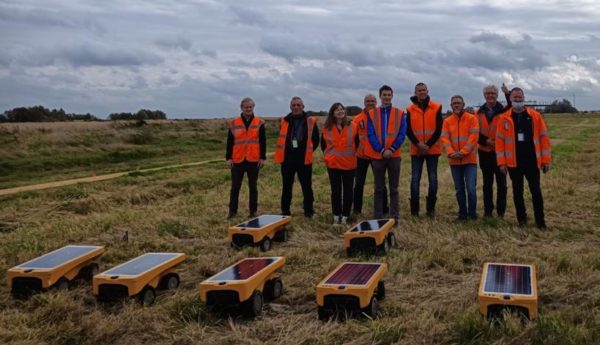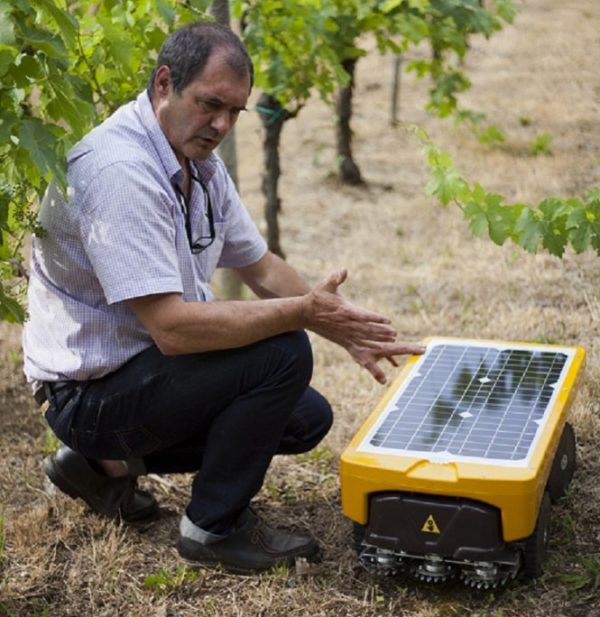French start-up Vitirover has developed an automated PV-powered robotic mower for applications in vineyards and other agricultural fields.
“The robots are built at our headquarters in Saint-Émilion, in the Gironde department of the Nouvelle-Aquitaine region in southwestern France,” the company's CEO and founder, Arnaud de la Fouchardiere, told pv magazine.
The 20 W device relies on polycrystalline solar cells, a battery and MPPT optimization. “Their price depends on the terrain, the state of the soil, the number of obstacles per hectare, the height of the solar panels, the way in which the motors are installed if they are trackers, and many other variables,” de la Fouchardiere explained.

Image: Vitirover
The robot measures 750 x 390 x 290 mm and weighs 20 kg. It is equipped with four wheels and one motor per wheel. It can operate with a maximum slope of 15% and reach a speed of 300m/h. It is claimed to be able to work under all weather conditions and to cut any kind of grass between 4 and 10 cm in height.
The system also uses a mobility management software that helps it detect obstacles to get as close as possible — less than 1 cm — to cut the grass around them. An AGPS tracker system with 15 days of battery autonomy embedded in the robot ensures anti-theft security.
The mower can be used in a 50-unit herd across a property of around 50 hectares and a radius of 20 km. Each of the robots is connected to an operator, which the company calls the “shepherd,” by means of cellular networks. If necessary, the shepherd can take control of the robot remotely to carry out the necessary maintenance or intervene on-site, for example, to unblock a robot.

Image: Vitirover
This content is protected by copyright and may not be reused. If you want to cooperate with us and would like to reuse some of our content, please contact: editors@pv-magazine.com.




Interesting. I read an article just last week about a study which illustrated the beneficial relationship between weedy undergrowth and fruiting trees. The study showed significant productivity increases when weeds were allowed to grow amongst the orchard trees. I’m wondering if this could be true for viticulture as well, and if this device is even necessary.